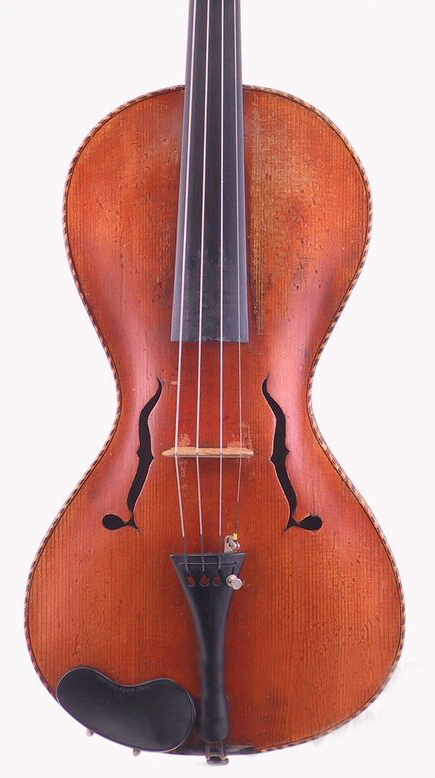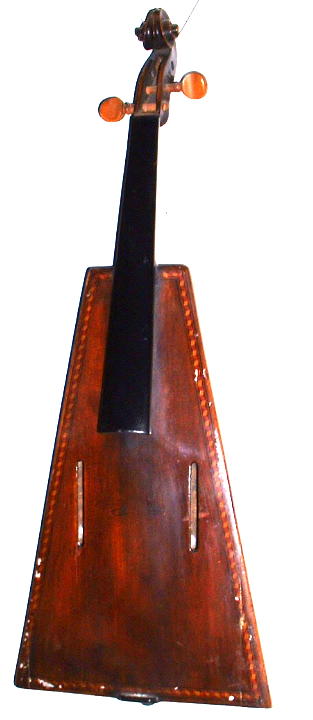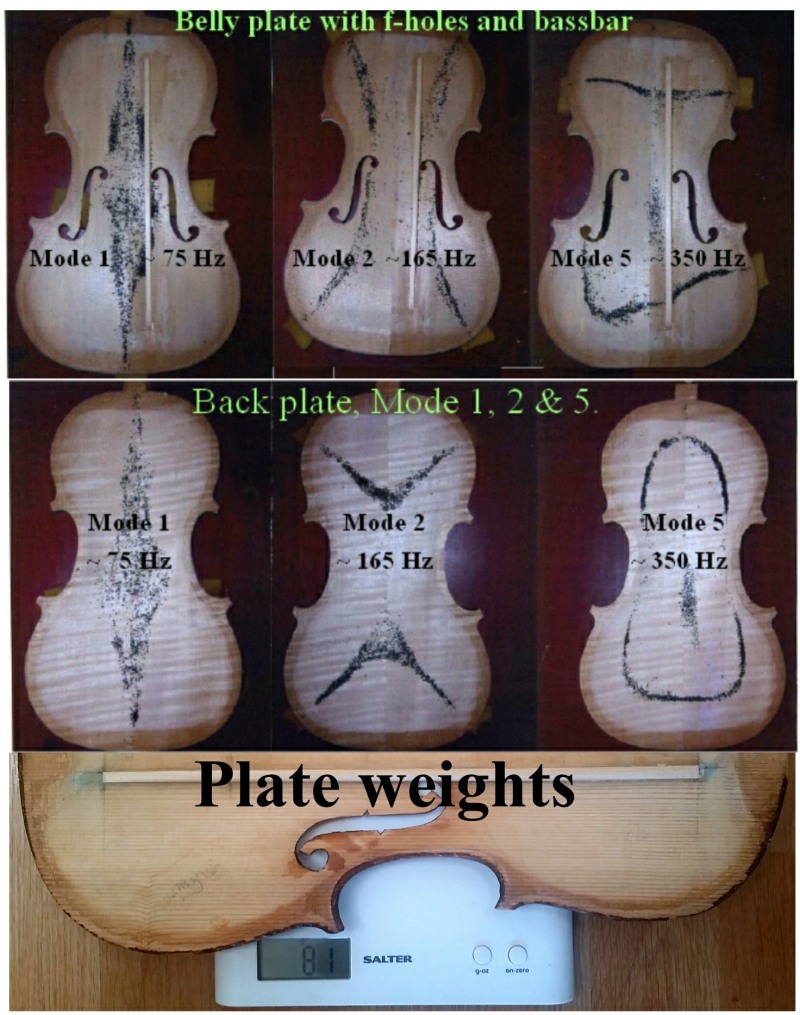|
Violins & violas of odd shapes
Most string instruments, except the guitar had their shapes and sizes determined by the late 1600’s, so for 300 years a violin has been violin shaped.
There have been many attempts to ‘improve’ on the classical baroque shape. Most have been unsuccessful, and almost all have found little acceptance by the paying, playing public.
There are some notable attempts to change the violin shape, and a few can be seen here at Springers Music. The violin is a complex, difficult shape to manufacture, so it is not surprising there have been attempts to simplify the construction without loss of tone.
People worth mentioning here are Mr Francois Chanot and Nicolo Guseto, who made ‘guitar shaped’ violins; and Rigat Rubus, a Russian who made novelty violins with the edges and scrolls edges rounded. There are quite a lot of poor Rubus copies of these around, especially on eBay. There is of course also the Hardanger Fiddle with its 8 strings, a left-over of earlier  proto-violin forms. proto-violin forms.
And there’s Félix Savart. His Trapezoid or ‘box’ violin (as well as the Chanot violin) is described by Ed. Heron-Allen in his book “Violin Making as it was, and is” - click on this link for access to the .pdf file of the whole book, courtesy of GoogleBooks. I’ve extracted the pages (p. 118 ff) here as a .pdf, as what is so surprising is that a ‘box’ with strings on can sound so much like a violin!
Ronald Roberts published a book called “Making a Simple Violin and Viola” in 1975 describing in detail how to make fractional and 4/4 violins, and also violas. Apparently the violas sound particularly good. As the front and back are not carved, and all the sides are all straight it is much easier to make than a classical ‘baroque-shaped’ violin: a good student project perhaps! Note that Savart put the bassbar right up the middle of the belly (!), but later copyists p ut it under the left foot of the bridge, as is more usual. ut it under the left foot of the bridge, as is more usual.
An Ed. Glass has been in touch with me from the USA : he’s made some successful violins with the lower corners missing: see right, and Tim Phillips has some similar violins.
Gasparo Da Salo made some early violas like this (Oxford Ashmolean Museum), and I think their appearance is rather elegant!
|
